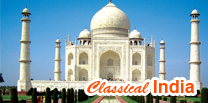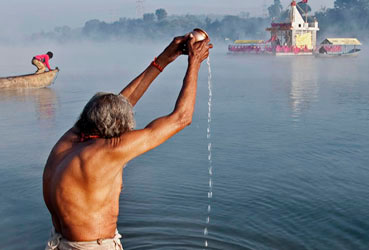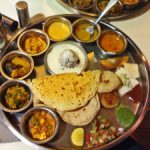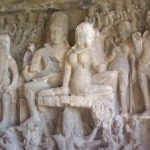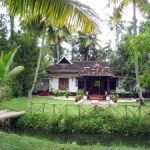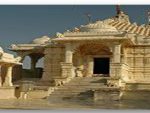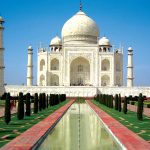Spiritual India
All of the world’s major religions are represented in this vast, mystical nation: Hinduism, Sikkism, Buddhism, Islam, Christianity and Judaism as well as some fascinating smaller communities of Jains and Parsis. It is from this long spiritual history where such modern-day western obsessions with spirituality and yoga were born. We will explore all these concepts on our tour and, in doing so, our own spirituality and a deeper appreciation of all religions will be rejuvenated!
Routing: Delhi – Ajmer – Pushkar – Jaipur – Agra – Orchha – Khajuraho – Varanasi – Delhi – Amritsar – Dharamshala – Delhi
Duration: 17 nights / 18 days
Overview Of The Tour
- Enjoy rickshaw ride at silver street, Old Delhi once during the stay.
- Visit to the Great Mughal Jama Mosque in Delhi
- Visit the amazing Bahai Lotus Temple & Akshardham Temple in Delhi
- Explore sacred Pushkar Lake, site of Hindu pilgrimage for centuries
- See the 14th-Century Brahma Temple, unique in India
- Explore the historic and sacred city of Ajmer
- Visit the Dargah Sharif Tomb of the Sufi saint Khwaja Moinuddin Chisti
- Elephant ride at Amber Fort in Jaipur
- Visit the famous Taj Mahal
- Elegant Lakshmi Narayan Temple and watch the sunset and visit the Ram Raja Temple, a converted palace of pink tiles and gold domes where devotees gather every evening to sing a rousing chorus.
- Witness the stunning temples of Khajuraho
- Boat ride on Sacred River Ganges in Varanasi
- Aarti Ceremony in Varanasi
- Visit over two and half thousand years as the birthplace of Buddha’s Mission of compassion to the world
- Come face to face with daily rituals and intriguing philosophy at one of the holiest cities of India – Haridwar
- Wander the ashrams of Rishikesh
- Visit the Golden Temple in Amritsar
- Enjoy the spectacular ‘Closing the Border Ceremony’ at Waga border
- Explore Tibetan culture at Dharamsala and Residence of His Holiness The Dalai Lama & Tibetans in exile
- India is a country where religion is ever-present and a vital part of everyday life. Not only is it present in the architecture, sculptures and paintings of its great monuments, but you are also immersed in its influence just by experiencing the hustle bustle of daily street life.
Day 1-Arrive Delhi
Arrive Delhi
 Welcome to India! Arrive at New Delhi’s International Airport. Following customs, immigration formalities and baggage collection, our representative will meet you as you exit the arrivals terminal building after which you will be transferred to your hotel.
Welcome to India! Arrive at New Delhi’s International Airport. Following customs, immigration formalities and baggage collection, our representative will meet you as you exit the arrivals terminal building after which you will be transferred to your hotel.
New Delhi, the capital and the third largest city of India is a fusion of the ancient and the modern. Standing along the West End of Gangetic Plain, the capital city, Delhi, unwinds a picture rich with culture, architecture and human diversity, deep in history, monuments, museums, galleries, gardens and exotic shows.
Comprising of two contrasting yet harmonious parts, the Old Delhi and New Delhi, the city is a travel hub of Northern India. Narrating the city’s Mughal past, Old Delhi, takes you through the labyrinthine streets passing through formidable mosques, monuments and forts. You will also discover lively and colorful bazaars that boast to cater all sorts of good and items at mind-blowing prices amidst a barely controlled chaotic ambience. The imperial city of New Delhi displays the finely curved architecture of British Raj. It generates a mesmerizing charm reflecting well-composed and spacious streets under the shade of beautifully lined avenues of trees and tall and imposing government buildings.
Day 2-Delhi
Delhi
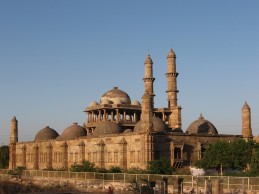 After breakfast, proceed for a fascinating tour of Delhi earlier known as Shah Jahanabad. Tour begins with a visit to the great Jama Masjid, the principal mosque of Old Delhi, built in 1656 AD by the Mughal Emperor Shah Jahan. We will be permitted to view a prayer service to gain a deeper insight into Islam.
After breakfast, proceed for a fascinating tour of Delhi earlier known as Shah Jahanabad. Tour begins with a visit to the great Jama Masjid, the principal mosque of Old Delhi, built in 1656 AD by the Mughal Emperor Shah Jahan. We will be permitted to view a prayer service to gain a deeper insight into Islam.
From Jama Masjid, we head to Laxmi Narayan Temple (also called the Birla Mandir) built in honour of the Hindu goddess of wealth, Laxmi, and of her consort, Lord Vishnu – the Preserver in the Trimurti. At the temple the Priest will conduct a special Prayer Ceremony for us. Later we visit Gurudwara Bangla Sahib, the most prominent Sikh house of worship which is instantly recognizable by its stunning golden dome.
We take time to visit the community kitchen and interact with the volunteers before stopping to view one of Delhi’s largest Roman Catholic Churchs, St.Cathedral, built in a bold, elegant design in the Lutyens tradition with an Italianate south front enriched by an oval mosaic cartouche of St. Francis from 1930-1934.
Later we drive to Shanti Stupa which was established by the Shanti Stupa Society to build the Vishwa Shanti Stupa (World Peace Pagoda) in the Indraprastha Park.
Our final visit today is to the Akshardham temple which brilliantly showcases the essence of India’s ancient architecture, traditions and timeless spiritual messages. Akshardham complex was built in only five years through the blessings of HDH Pramukh Swami Maharaj of the Bochasanwasi Shri Akshar Purushottam Swaminarayan Sanstha (BAPS) and the colossal devotional efforts of 11,000 artisans and BAPS volunteers. The complex was inaugurated on 6 November, 2005.
Overnight at hotel.
Day 3-Delhi to Ajmer
Delhi to Ajmer by Shatabdi Express Train/drive to Puskhar
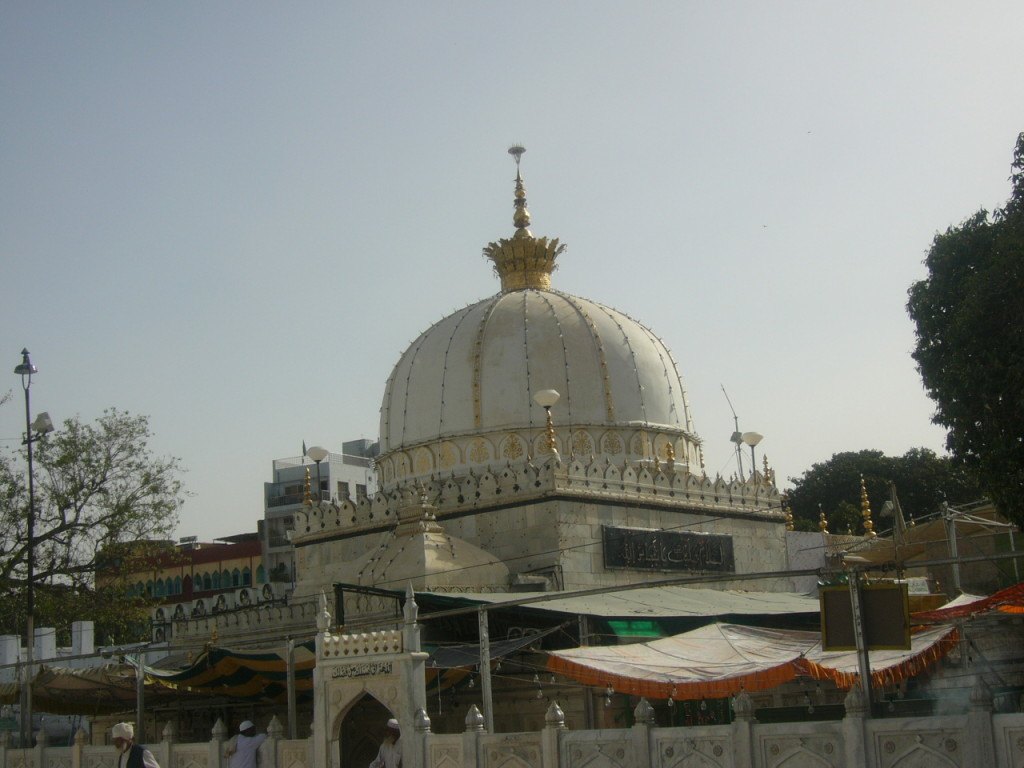 Morning transfer to New Delhi railway station to catch the 6:05am Ajmer Shatabdi Express for Ajmer arriving at 1:00pm. On arrival, we visit Dargah made famous by Sufi Hazrat Mu’inuddin Chishti, the founder of the Chishti Sufi order, before taking a short transfer to Pushkar and our hotel.
Morning transfer to New Delhi railway station to catch the 6:05am Ajmer Shatabdi Express for Ajmer arriving at 1:00pm. On arrival, we visit Dargah made famous by Sufi Hazrat Mu’inuddin Chishti, the founder of the Chishti Sufi order, before taking a short transfer to Pushkar and our hotel.
Overnight at hotel
Day 4-Drive Pushkar to Jaipur
Drive Pushkar to Jaipur
 This morning visit the shore of Pushkar Lake which has five principal temples plus many smaller temples as well as 52 ghats where pilgrims descend to the lake to bathe in its sacred waters. One of the primary temples is a 14th century temple dedicated to Brahma, the Hindu god of creation. After lunch in Pushkar, drive to the ‘Pink City’ of Jaipur.
This morning visit the shore of Pushkar Lake which has five principal temples plus many smaller temples as well as 52 ghats where pilgrims descend to the lake to bathe in its sacred waters. One of the primary temples is a 14th century temple dedicated to Brahma, the Hindu god of creation. After lunch in Pushkar, drive to the ‘Pink City’ of Jaipur.
Jaipur is the capital city and the natural gateway to the exotic Rajasthan. It a bustling capital city and a business centre with all the trappings of a modern metropolis but yet flavoured strongly with an age-old charm that never fails to surprise a traveller. The old Jaipur painted in Pink can grip any visitor with admiration. Stunning backdrops of ancient forts Nahargarh, Amer, Jagarh and Moti Dungri are dramatic testimonials of the bygone era and a reminder of their lingering romance.
Overnight at hotel.
Day 5-Jaipur
Jaipur
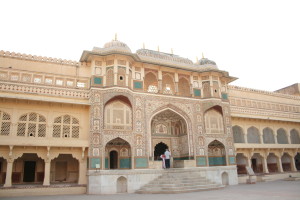 Our morning session of Yoga exercise, the traditional physical and mental disciplines originating in India, will prepare us for the cheerful chaos of Jaipur! With its rich & colourful past, resplendent with tales of velour & bravery, Jaipur is now one of the most important heritage cities in India. The city was founded in the year 1728 by Maharaja Sawai Jai Singh II, the ruler of Amber. It remains the only city in the world symbolizing the nine divisions of the universe, through nine rectangular sectors.
Our morning session of Yoga exercise, the traditional physical and mental disciplines originating in India, will prepare us for the cheerful chaos of Jaipur! With its rich & colourful past, resplendent with tales of velour & bravery, Jaipur is now one of the most important heritage cities in India. The city was founded in the year 1728 by Maharaja Sawai Jai Singh II, the ruler of Amber. It remains the only city in the world symbolizing the nine divisions of the universe, through nine rectangular sectors.
Our first stop is an excursion to Amber Fort, situated just outside the city, where you can enjoy the experience of a ride on a elephant back to and from the top of the hill on which the fort is situated. From the Fort we head to the City Palace in the heart of Jaipur, known for its blend of Rajasthani and Mughal architecture. We also take time to the visit the famous Hawa Mahal or the Palace of Winds constructed for the royal ladies to watch the royal processions without being seen. Jaipur is also famous for its crafts and Indian artifacts and you will have plenty of time to barter in all the shops and stalls that line the city streets.
Overnight at hotel.
Day 6-Drive Jaipur to Agra
Drive Jaipur to Agra Via Fatehpur Sikri
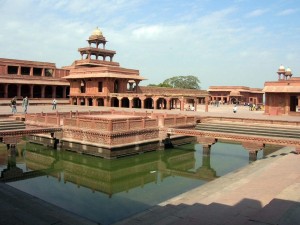 Morning leave for Agra. Enroute, stop to visit Fatehpur Sikri known as the Ghost Capital and a UNESCO World Heritage site. Fatehpur Sikri, situated 26 miles west of Agra, was built on the orders of the Mughal Emperor Akbar and was the political capital under his reign from 1571-1585 when it was abandoned due to lack of water.
Morning leave for Agra. Enroute, stop to visit Fatehpur Sikri known as the Ghost Capital and a UNESCO World Heritage site. Fatehpur Sikri, situated 26 miles west of Agra, was built on the orders of the Mughal Emperor Akbar and was the political capital under his reign from 1571-1585 when it was abandoned due to lack of water.
While Akbar himself was illiterate, he took a keen interest in literature, architecture, and the arts. He is also reputed to be a very tolerant ruler, and the buildings at Fatehpur Sikri blended both Islamic and Hindu elements in their architectural style. One of the buildings even reflects the new syncretistic faith founded by Akbar, Din-e-ilahi, which though very short-lived, remains a matter of controversy. We arrive late afternoon into Agra. Evening free.
Overnight at hotel.
Day 7-Agra
Agra
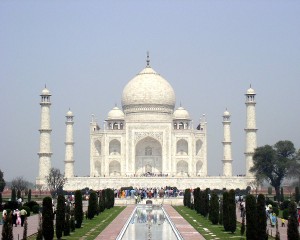 Agra, beautifully situated on the banks of river Yamuna, achieved prominence as the capital of the Mughal Emperors from the year 1526 to 1628. It remains a major tourist destination because of its many splendid Mughal-era monuments, most notably the Taj Mahal & Agra Fort, both UNESCO World Heritage sites.
Agra, beautifully situated on the banks of river Yamuna, achieved prominence as the capital of the Mughal Emperors from the year 1526 to 1628. It remains a major tourist destination because of its many splendid Mughal-era monuments, most notably the Taj Mahal & Agra Fort, both UNESCO World Heritage sites.
Afternoon visit to the St. Mary’s Catholic Church. Later visit the Missionary of Charity, an orphanage and also Mother Teresa former home. Overnight in Agra.
Overnight at hotel.
Day 8-Agra to Jhansi
Agra to Jhansi by Shatabdi Express Train/road to Khajuraho
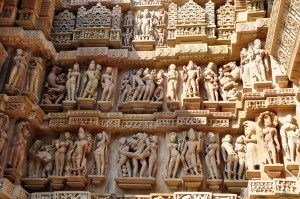 After breakfast this morning, transfer to the Agra Railway Station to catch the Bhopal Shatabdi Express at 8:30am for Jhansi. Arrive Jhansi at 11:00 am and board our coach for the journey to Khajuraho. En route we will visit Orcha whose 16th century Hindu rulers managed to stay on friendly
After breakfast this morning, transfer to the Agra Railway Station to catch the Bhopal Shatabdi Express at 8:30am for Jhansi. Arrive Jhansi at 11:00 am and board our coach for the journey to Khajuraho. En route we will visit Orcha whose 16th century Hindu rulers managed to stay on friendly
terms with the Mughals allowing them to build spectacular palaces and temples.
After visiting the Orcha Temples, continue on to Khajuraho. Situated in the heart of central India, in the state of Madhya Pradesh, Khajuraho is a fascinating village with a quaint rural ambience and a rich cultural heritage. The fascinating Hindu temples of Khajuraho, India’s unique gift of love to the world, present the expression of a highly matured civilization.
Overnight at hotel.
Day 9-Fly Khajuraho To Varanasi
Fly Khajuraho To Varanasi
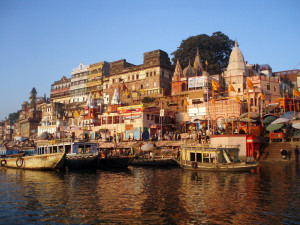 After breakfast, proceed for sightseeing of Khajuraho. The city was once the original capital of the Chandela Rajputs, a Hindu dynasty that ruled this part of India from the 10th to the 12th centuries. The Khajuraho temples were built over a span of a hundred years, from 950 to 1050. The uniqueness of the Khajuraho Temples lies in their architecture – constructed with spiral superstructures adhering to a northern Indian Shikhara Temple style and often to a Panchayatana plan or layout.
After breakfast, proceed for sightseeing of Khajuraho. The city was once the original capital of the Chandela Rajputs, a Hindu dynasty that ruled this part of India from the 10th to the 12th centuries. The Khajuraho temples were built over a span of a hundred years, from 950 to 1050. The uniqueness of the Khajuraho Temples lies in their architecture – constructed with spiral superstructures adhering to a northern Indian Shikhara Temple style and often to a Panchayatana plan or layout.
A few of the temples are dedicated to the Jain pantheon and the rest to Hindu deities – to the God’s Trio, Brahma, Vishnu and Shiva, and various Devi forms, such as the Devi Jagadambi temple. Many are famous for their celebration of the erotic state of being. Our expert guide will be able to give us an in-depth look at these temples.
This afternoon we transfer to the airport for our flight to India’s holiest city, Varanasi, also known as Banaras or Kashi, the “city of light.” For centuries, thousands of pilgrims have made their way to the city to walk down the “ghats” or steps to the banks of the sacred Ganges River.
On arrival, our first stop is in Sarnath (Buddhist Stupa) to visit the deer park where Gautama Buddha first taught the Dharma, and where the Buddhist Sangha came into existence through the enlightenment of Kondanna. Sarnath is located 13 kilometers north-east of Varanasi, in Uttar Pradesh, India.
At dusk, we witness the holy ceremony of ‘aarti’ (hyms and prayers) on the banks of the Ganga and view the sight of hundreds of lighted lamps flowing on the waters – a sight one will not forget.
Overnight at hotel.
Day 10-Varanasi
Varanasi
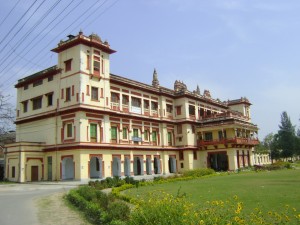 We start our day with an early morning boat ride on the sacred River Ganges to see the cremation Ghats and witness the living traditions of one of the world’s oldest and important religions. At sunrise the sight unfolds before us, thousands of faithful come daily to the banks to bathe and pray while in the background, temples and palaces rise in tiers from the water’s edge.
We start our day with an early morning boat ride on the sacred River Ganges to see the cremation Ghats and witness the living traditions of one of the world’s oldest and important religions. At sunrise the sight unfolds before us, thousands of faithful come daily to the banks to bathe and pray while in the background, temples and palaces rise in tiers from the water’s edge.
After the boat ride, visit the Temple and walk through the narrow lanes of Varanasi.
Later visit Benares Hindu University, an internationally reputed temple of learning in Varanasi. This creative and innovative university was founded by the great nationalist leader, Pandit Madan Mohan Malviya in 1916. It played a stellar role in the independence movement and has developed into the greatest center of learning in India. It has produced many great freedom fighters and builders of modern India and has contributed immensely to the progress of the nation through a large number of renowned scholars, artists, scientists and technologists who have graced its portals.
Overnight at hotel.
Day 11-Fly Varanasi to Delhi – Haridwar
Fly Varanasi to Delhi – Haridwar
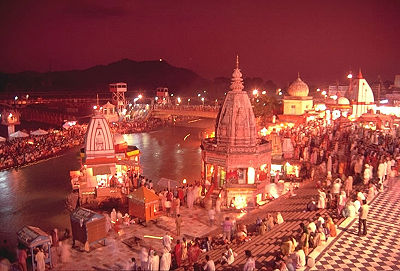 In time transfer to the airport for your flight to Delhi.
In time transfer to the airport for your flight to Delhi.
Arrive Delhi and transfer to the New Delhi Railway Station to catch the 1535 PM train to Haridwar arriving at 1932 hrs.
On arrival transfer to hotel.
In Hinduism, this city is a place of pilgrimage and is one of the seven holy cities. Main destination of the pilgrims is the Hari-ki-Pauri. In the Brahma Kund after the presentation of the faithful heavenly water flowing into the Ganges. A temple here is to contain the footprint of Vishnu. The place is significant because here the entrance of the corridor is seen in the level.
Overnight in Haridwar.
Day 12-Haridwar – Rishikesh-Haridwar
Haridwar – Rishikesh-Haridwar
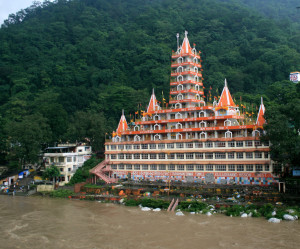 Your journey continues to Rishikesh, nestled at the foot of the Himalayas. Rishikesh is the starting point for pilgrims to the holy places in the Garhwal mountains: Badrinath, Kedarnath, Yamunotri, Gangotri and Gaumukh, the source of the Ganges. Rishikesh flows through the Ganges, which captivates not only by mythological significance as ‘holy river’, but also with clear water and scenic beauty. In Rishikesh visit Laxman Jhula, Ram Jhula, Gita Bhavan and many other temples. In the evening, visit an ashram in Rishikesh.
Your journey continues to Rishikesh, nestled at the foot of the Himalayas. Rishikesh is the starting point for pilgrims to the holy places in the Garhwal mountains: Badrinath, Kedarnath, Yamunotri, Gangotri and Gaumukh, the source of the Ganges. Rishikesh flows through the Ganges, which captivates not only by mythological significance as ‘holy river’, but also with clear water and scenic beauty. In Rishikesh visit Laxman Jhula, Ram Jhula, Gita Bhavan and many other temples. In the evening, visit an ashram in Rishikesh.
Overnight in Haridwar.
Day 13-Haridwar – Amritsar
Haridwar – Amritsar
After breakfast,
Morning visit Haridwar temples.
Afternoon transfer to the Haridwar Railway Station to catch the 1435PM train to Amritsar arriving at 2200 hrs.
On arrival met and transferred to our hotel.
Overnight at hotel.
Day 14-Amritsar
Amritsar
Morning visit the famous Golden Temple – culturally the most significant shrine of the Sikhs and one of the oldest Sikh Gurudwara. Here we will learn more about Sikh beliefs and traditions. The Sikh Religion was an attempt by its first guru (teacher) Nanak to merge the principles of Hinduism and Islam in 1469. One of Nanak’s successors founded the Khalsa, a committed and baptised group of both men and women. Male members of the Khalsa wear a turban and keep five K’s: Kesha (uncut hair and beard), kangha (comb for their hair), kara (steel bracelet), kacha (soldier’s shorts) and kirpan (daggar).
Also visit Jallianwala Bagh which was the place where more than 2000 people were brutally killed in April, 1919 by the police commanded by General Dyer. On the memory of those innocent freedom fighters many people visit the place daily and feel the greatness of those souls. We will see the marks of bullets still visible in the walls and a well where many people jumped to escape to tell the horrifying tale of that time.
This evening we visit the Wagha Border, the only road border crossing between India and Pakistan. It lies on the Grand Trunk Road between the cities of Amritsar, India and Lahore, Pakistan. The border is a ceremonial border where each evening there is a ceremony called ‘lowering of the flags.’ At that time there is very energetic and thrilling parade done by Border Security Force (B.S.F) India and Pakistan Rangers soldiers. It may seem slightly aggressive to foreigners, but it really is just entertainment for the crowds from both sides. Border officers from the two countries sometimes walk over to the offices on the other side for day to day affairs.
Overnight at hotel.
Day 15-Amritsar – Dharamsala
Morning after breakfast drive up the mountains to Dharamsala, a popular hill station as well as the spiritual abode of the Dalai Lama in Himachal Pradesh. It is divided into two parts: Dharamsala being the lower section is three km away from its higher section, McLeodganj, which is 500 m above, a Hill Station in Himachal Pradesh.
Overnight at hotel.
Day 16-Dharamsala
Dharamsala
Full day visiting McLeodganj. Take time to relax and absorb the awe-inspiring beauty and tranquility of this region.
Overnight at hotel.
Day 17-Dharmsala to Chakki Bank Railway to Delhi
Dharmsala to Chakki Bank Railway to Delhi
Morning is at leisure before transferring to the Chakki Bank Railway Station to catch the overnight train to Delhi.
Overnight on board the train.
Day 18-Arrive Delhi and depart
Arrive Delhi and depart
On arrival in Delhi, we transfer to our hotel for the day use. Evening transfer to the airport to connect your flight back to home

